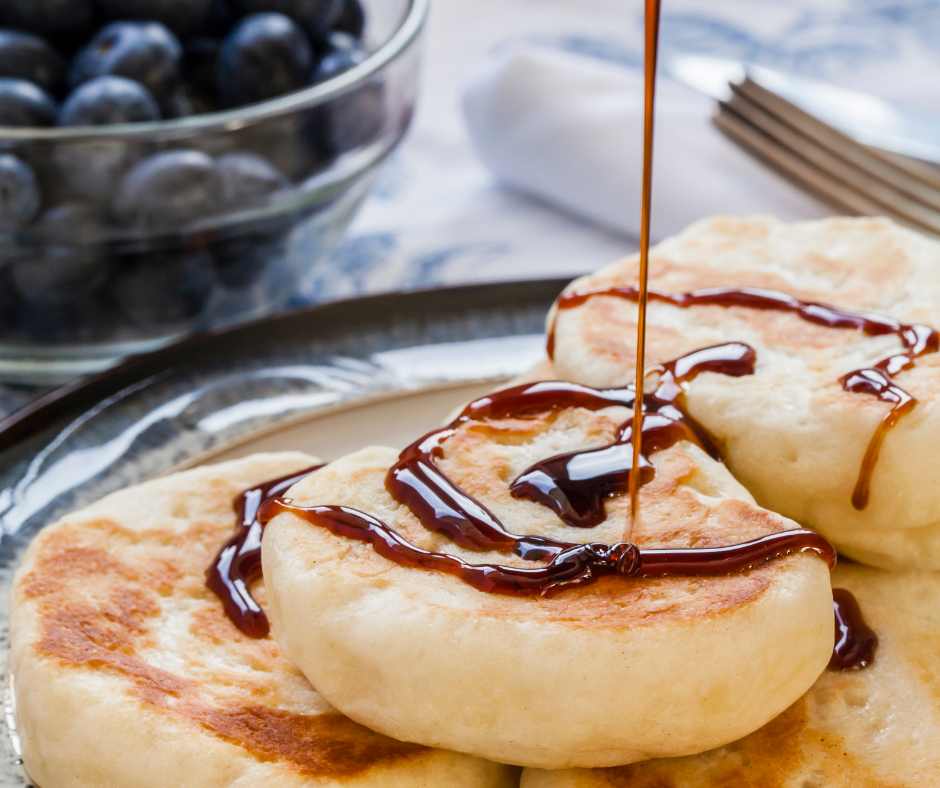Newfoundland Touton Bread

Golden and crisp outside, soft and chewy inside — toutons are Newfoundland’s beloved pan-fried bread. Traditionally made from leftover bread dough fried in pork fat, they were a hearty breakfast for families who lived close to the sea. Today, they remain a comfort food classic, still paired with molasses or jam, but just as at home carrying lobster salad or prawns. A humble bread that has grown with the province, toutons are a true taste of the East Coast.
Prep Time: 20 minutes (plus rising time)
Total Time: 2–3 hours
Serves: 8–10
Ingredients
4 cups all-purpose flour
2 tsp salt
2 tsp sugar
2 ¼ tsp (1 packet) active dry yeast
1 ½ cups warm water (about 45°C / 110°F)
2 tbsp butter or oil (for frying, plus more if needed)
Method
In a small bowl, dissolve sugar and yeast in warm water. Let sit 5–10 minutes until foamy.
In a large bowl, combine flour and salt. Make a well in the centre, pour in the yeast mixture, and stir to form a dough.
Knead on a lightly floured surface for 8–10 minutes until smooth and elastic. Place in a greased bowl, cover, and let rise 1–2 hours, until doubled in size.
Punch down the dough and divide into 8–10 equal pieces. Flatten each into a small round, about 1 cm thick.
Heat butter or oil in a skillet over medium heat. Fry toutons in batches, 3–4 minutes per side, until golden brown. Drain on paper towel if needed.
Serve warm — sweet with molasses or jam, or savoury as a base for seafood.
Variations
Classic Breakfast – served hot with butter and molasses.
Seafood Twist – topped with lobster or prawn salad for a Newfoundland spin on the lobster roll. Modern Comfort – brushed with garlic butter and paired with chowder.
The eastern provinces of Canada — Nova Scotia, Prince Edward Island, and Newfoundland & Labrador — form the country’s gateway to the Atlantic. Long before Europeans arrived, these lands were home to the Mi’kmaq and other Indigenous peoples, who lived from the sea and the land with traditions that continue to shape the region. Vikings landed on Newfoundland’s shores around the year 1000, and centuries later French and English settlers built fishing villages, trading posts, and fortified towns like Halifax and St. John’s.
Cod, lobster, mussels, and potatoes became staples, and with Celtic, Acadian, and maritime influences, the region developed a food culture that is humble, hearty, and resourceful. Bread was a constant companion — from Irish soda breads to toutons fried in pork fat, eaten hot with molasses or butter. These dishes reflect the spirit of the East Coast: resilient, generous, and deeply tied to both land and sea.

Newfoundland
